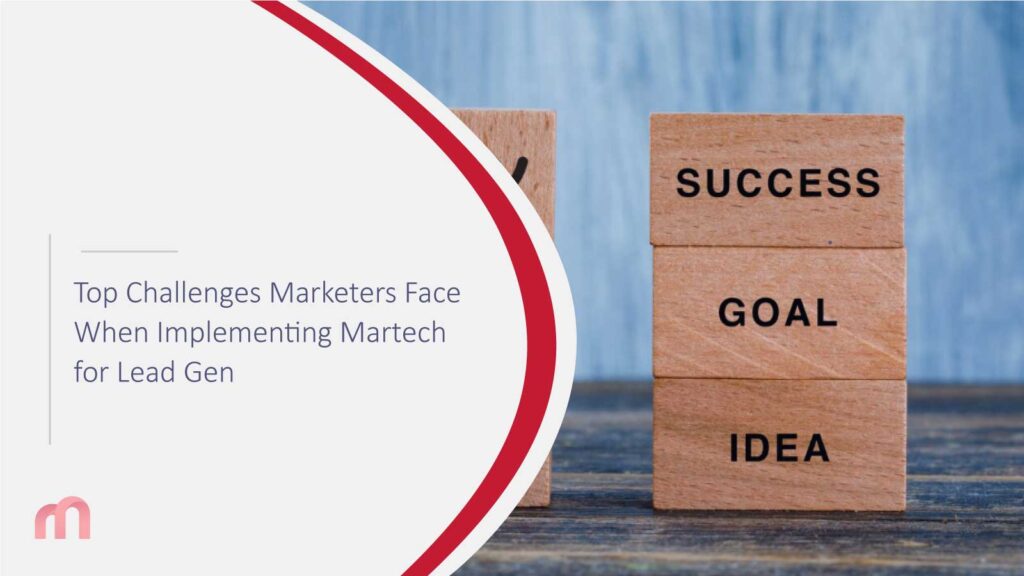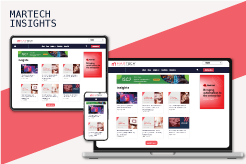You’ve got the tools. You’ve got the tech. Your Martech stack has everything from predictive lead scoring to automated workflows and multi-touch attribution. So why does lead generation still feel… sluggish? You’re not alone. The truth? Having Martech doesn’t mean using Martech effectively. In 2025, when the average B2B buyer’s journey spans six channels and three departments, having a sleek-looking dashboard isn’t the same as building a pipeline that converts in lead gen. Let’s unpack what’s holding most teams back and how the best marketers are turning their tech stacks into real growth engines.
1. When More Tools Just Mean More Complexity
Let’s start with the obvious: Martech is crowded. Crowded.
In 2025, we’re looking at 11,000+ Martech solutions (yes, seriously). From AI-driven personalization tools to engagement scoring systems, it’s like walking into a digital candy store and grabbing everything.
But here’s the catch: having too many tools often creates overlap, confusion, and fatigue. What starts as “let’s automate everything” turns into “why are we paying for three platforms that do the same thing?”
Sound familiar?
“We bought it for lead scoring… now no one logs in.”
This isn’t about using fewer tools. It’s about using the right ones and getting your team to use them.
What helps?
Start with your lead gen goals. Don’t buy a tool unless it answers a specific “how” in your strategy. Then, streamline your stack so each platform has a clear purpose and owner.
2. Siloed Data Still Haunts Great Campaigns
You’ve crafted the perfect nurture sequence. Sales has a hot lead list. But your CRM says “CTO” while the automation system still says “Marketing Manager.” Guess who’s confused? Everyone.
Disjointed systems are the silent killer of personalization and, therefore, of conversions. According to Forrester, 68% of marketers say siloed data is their #1 blocker to personalization at scale.
What’s the root of this issue?
Most teams adopt Martech as a patchwork, without connecting it end-to-end. The result: lots of dashboards, very few insights.
What works better?
Build a single view of the customer. Use integration-friendly tools. Or, if you’re scaling fast, invest in a CDP (Customer Data Platform) that stitches everything together.
Think of it like this: your buyer journey is one story your tech should tell it seamlessly.
3. AI Alone Won’t Save You in Lead Gen
We all love a good AI story. Predictive scoring! Content generation! Personalized journeys! But here’s something few will say out loud:
AI without strategy is just expensive automation.
According to Gartner, only 37% of marketers using AI for lead generation report measurable ROI. Why? Because they jumped in without clean data, clear goals, or workflows ready to support it.
AI isn’t magic. It’s a partner. It does best when paired with strong human judgment and purpose-built use cases.
So what should you do instead?
- Start small (think: segmenting users by behavior or optimizing email send times).
- Define success before deployment.
- Treat AI like an intern, train it, review its output, and guide it.
When used wisely, AI becomes a force multiplier, not a money pit.
4. Your Team Isn’t Aligned (Even If Your Stack Is)
Here’s the part people often overlook: you can have the best Martech stack in the world, but if your team isn’t on board, none of it matters.
This isn’t about blame. It’s about habits.
Marketers are expected to master automation platforms overnight. SDRs are told to use dashboards they didn’t help choose. Meanwhile, leadership expects ROI by next quarter.
And guess what? 53% of Martech tools go underused due to low adoption, says McKinsey.
How do you turn it around?
- Start with enablement, not just implementation.
- Offer continuous (not one-time) training.
- Make Martech usage a part of your team’s daily rituals,ot an optional add-on.
They’re not just end-users; they’re your biggest adoption advocates (or blockers).
5. Vanity Metrics Are Still Tricking Smart Marketers in Lead Gen
You’ve got great email open rates. Your webinars are packed. The MQL list is growing.
But how much of that is an actual pipeline?
According to the Demand Gen Report, 59% of marketers admit they don’t have clear attribution models in place. That means you’re optimizing for visibility, not impact.
Here’s a quick gut-check:
- Do you know which channels deliver leads that close?
- Can you tell which campaigns influence deal velocity?
- Is your reporting tied to revenue or reach?
If not, you’re not alone, but you are at risk.
How to fix it?
- Shift from last-touch to multi-touch attribution.
- Integrate your CRM and automation for full-funnel visibility.
- Work backward from closed-won deals to see what moved the needle.
6. Compliance Can’t Be an Afterthought Anymore
In 2025, ignoring privacy rules is like speeding past a cop on the freeway. Risky at best. Catastrophic at worst.
With GDPR, CPRA, and India’s new DPDP Act all fully enforced, data governance has become a dealbreaker, not a checkbox.
Even more telling? McKinsey’s Digital Trust study shows that 72% of B2B buyers evaluate vendors based on data ethics before scheduling a demo.
That’s huge.
What this means for marketers:
- Get legal and security teams involved early.
- Vet Martech vendors for compliance (don’t assume they’re covered).
- Make opt-in experiences clear, clean, and valuable.
Privacy isn’t the end of personalization. It’s the beginning of trust.
Conclusion
Martech Isn’t a Magic Wand – It’s a Mirror. Here’s the truth: Martech reflects the health of your marketing strategy, team, and data. If any of those are off, no tool will fix it. But when they’re aligned? Martech becomes a multiplier.
If your stack isn’t delivering, ask the tougher questions:
- Are we chasing tools or solving problems?
- Do our metrics reflect business impact or just activity?
- Are we empowering people or overwhelming them?
The marketers winning in 2025 aren’t the ones with the biggest budgets. They’re the ones with the clearest alignment between tech, teams, and truth.
FAQs
1. What’s the first step before implementing a new Martech tool?
Start by identifying the exact lead-gen challenge you’re solving. Don’t lead with a feature list lead with a business goal.
2. Is AI necessary for lead generation today?
AI can boost lead scoring, segmentation, and content delivery, but only if your data is clean and your use case is clear. It’s a great partner, not a silver bullet.
3. How do I prevent Martech overload in my team?
Audit your stack quarterly. Remove redundant tools. And make sure each platform is owned, used, and tied to specific KPIs.
4. Can small teams succeed with Martech too?
Absolutely. Many all-in-one platforms are designed for lean teams. The key is to master a few tools deeply rather than many tools shallowly.
5. What’s the most underrated Martech mistake marketers make?
Underestimating internal training. Tools don’t fail teams do when they aren’t supported. Make enablement a priority from day one.
Want a Martech strategy that converts?
Intent Amplify helps B2B marketers unify AI insights, intent data, and automation into one cohesive engine so you focus less on dashboards and more on deals.
Discover the trends shaping tomorrow’s marketing – join the leaders at MarTech Insights today.
For media inquiries, you can write to our MarTech Newsroom at news@intentamplify.com



